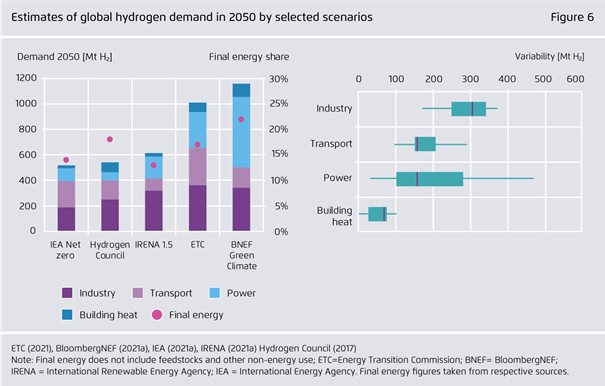
Hydrogen efficiency will beat expectations🥊
After spending the last six months looking at cutting edge hydrogen tech I believe that the prevailing view that hydrogen is inefficient needs an update.
There’s much innovation to be excited about on the horizon.
After spending the last six months looking at cutting edge hydrogen tech I believe that the prevailing view that hydrogen is inefficient needs an update.
There’s much innovation to be excited about on the horizon.

Take this T&E chart for instance, which assumes that electrolysis is 76% efficient, and fuel cells are only 54%, which together account for the bulk of the losses. Almost every paper out there uses similar, often worse, numbers. 

Current tech is already better than that. For instance, Nel’s stack can be up to 93% efficient (3.8kWh/Nm3 H2). Those numbers are rarely achieved in practise though as the stacks are run at higher current densities (=lower efficiency, but less capex)
nelhydrogen.com/product/atmosp….
nelhydrogen.com/product/atmosp….
But efficiencies are getting better. See the performance of the Oort Energy stack. 90% efficiency at 2A/cm2. This is not some experimental stuff, it’s a full sized stack ready to be manufactured. 



In addition to high efficiency, Oort can electrochemically pressurise H2 internally to 200 bar at less than half the energy cost of mechanical compression. 

You may also have heard of Hysata which set a record breaking efficiency (98%), though tech is still several years away from commercialisation as it has serious degradation problems.
prnewswire.co.uk/news-releases/…
prnewswire.co.uk/news-releases/…
But more innovation is coming. From the less conventional architectures, we’ve got H2Pro which claims 95% efficiency.
So, upcoming electrolysis solutions are looking pretty efficient to me, a step up from the 70-75% efficiencies assumed by many today.
h2pro.co
So, upcoming electrolysis solutions are looking pretty efficient to me, a step up from the 70-75% efficiencies assumed by many today.
h2pro.co
On the fuel cell the innovation is just as good, if starting from a lower baseline (50%). The technology to watch for is high temperature PEM. By high temperature I'm referring to 200C, which aids in rejection of water, a rate limiting step.
Practically, this means that high temperature PEM fuel cells would enjoy a 30% increase in efficiency, i.e from 54% to 70%. Several companies working on this, like Hy-point, Advent, or Mebius.
electrive.com/2022/03/31/hyp…
electrive.com/2022/03/31/hyp…
Applying these innovations to the T&E chart:
Hydrogen production with storage is now 82% efficient.
Round trip efficiency is now 54%, so only 1/3rd less efficient than using electricity directly. Compare with 42% T&E had assumed for… 2050!

Hydrogen production with storage is now 82% efficient.
Round trip efficiency is now 54%, so only 1/3rd less efficient than using electricity directly. Compare with 42% T&E had assumed for… 2050!


And that’s not the end of it. In the storage part, companies like @RuxEnergy (metal organic frameworks) or @VerneH2 (cryocompression) are almost able to match the density of liquified hydrogen without 40% energy loss.
Does this change the calculus for hydrogen? To a certain degree.
On the road batteries have a significant first mover advantage which I think they’re likely to retain, especially since this up and coming hydrogen innovation won’t get commercialised overnight.
On the road batteries have a significant first mover advantage which I think they’re likely to retain, especially since this up and coming hydrogen innovation won’t get commercialised overnight.
But hydrogen might feel a boost in heavier and infra sensitive applications. I think regional aviation will be a good case in point. Heavy trucking and construction too. Trains could be a good one. 

High temperature process heat is another one which would also get a boost. Even if heating with hydrogen is 12% less efficient than with electricity, it may be simpler to repurpose gas infrastructure than it is to lay hundreds of MW of new lines. EU modelling sees a role here. 

To conclude: electrolysis is becoming much more efficient than the 70% it gets quoted on. Fuel cells are also getting better. Does this mean we’re all getting FCEVs and hydrogen boilers in 2030? Probably not, but other applications may get a hydrogen boost.
P.S. - Perhaps the real prize here is not that FCEVs are more efficient, but that we will need much less renewable energy to introduce green hydrogen in feedstock applications.
P.P.S. - some have asked about innovation in solid oxide electrolysers. That is happening as well, suggested company to watch is @advancedionics
PSA - I have issued two corrections
https://twitter.com/gnievchenko/status/1545805860496150531?s=20&t=Ypa38b4ulNllxSnwkwS1Ng
• • •
Missing some Tweet in this thread? You can try to
force a refresh













